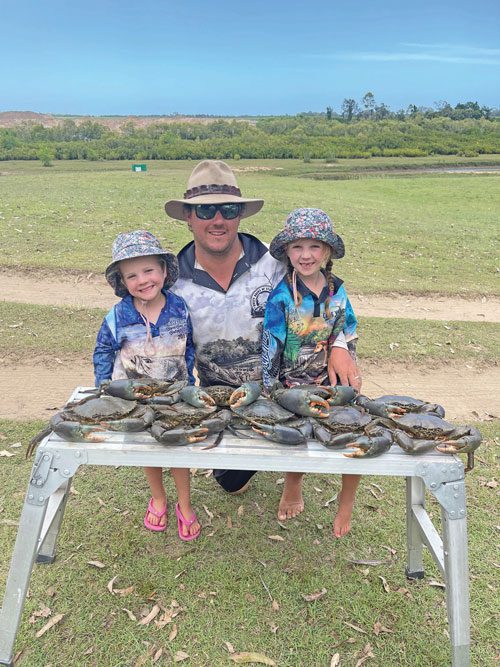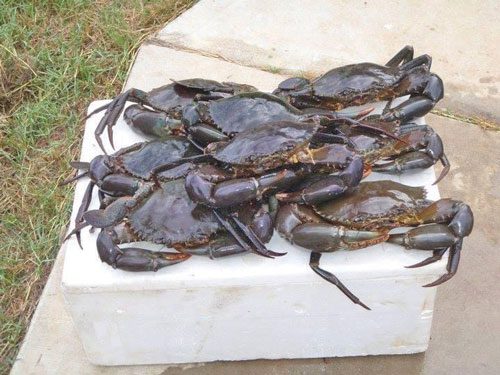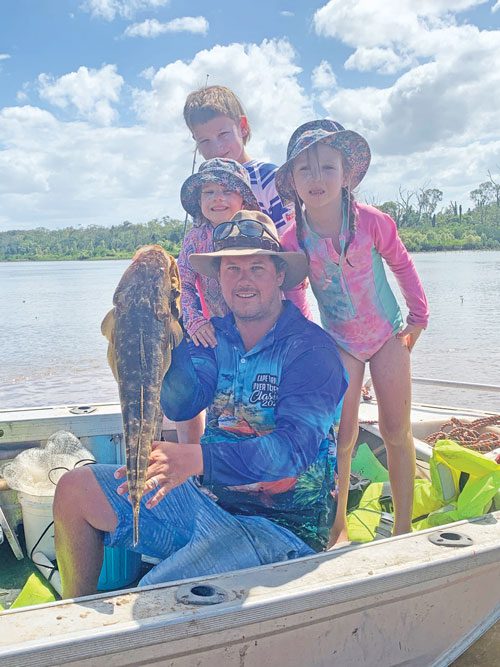I enjoy the whole process of chasing a feed of mud crabs and it’s great fun for the whole family.
From motoring up a tiny mangrove-lined creek, the search for likely spots to throw baited pots, the anticipation with the kids of pulling up a big buck, to boiling your catch as you enjoy a well-earned beverage.
Both little and big kids can have a ball trying to get a feed of what is arguably one the most popular seafoods in Australia.
Mud crabbing is certainly a topic that has been well covered in fishing publications, but if you’re starting out, hopefully you pick up a few useful tips from this article.
First, there is much debate about the best bait.

While I personally prefer oily bait such as mullet, there are many opinions about what pot bait you should and shouldn’t use.
A couple of absolute myths you may have heard are ‘reef fish frames don’t work’ and ‘crabs won’t go into a pot that has an estuary cod frame for bait as they prey on crabs’.
Experienced crabbers will laugh this off because they know mud crabs are vigorous scavengers.
They aren’t fussy and will scavenge any carrion, so long as it is reasonably fresh.
In years gone by, kangaroo, pig heads and chicken frames were – and still are – the favoured bait options of many crabbers.
However, they aren’t as cheap these days.

So, it makes sense to freeze your own fish frames from your offshore and estuary trips into ‘ready to grab’ pot bait portions.
Keeping fresh bait in your pots each day is important on a crabbing trip.
Though instead of simply tossing the old smelly half-chewed bait in the water, put it in a bucket and dispose of it over the side well away from the pots, so no big muddies in the vicinity are walking off with an easy meal.
Secure your bait well.
Anything you can do to keep your bait intact longer is worthwhile, as once it’s gone, the crabs will try to escape.
Most decent pots these days have quality in-built bait holders, however I also make my own bait holders using a heavy-duty gutter guard mesh and zip ties, which seem to hold up well against powerful claws.
Even more important than which bait you go with is the location of where you drop your pots.
As their name suggests, mud crabs generally prefer a soft muddy bottom, and mangroves provide both food and protection.

If you have a couple of days up your sleeve, don’t hesitate to move your pots around a little initially to locate crabs.
I prefer to do the extra miles to crab in locations that may see less pressure.
Google Earth is a valuable tool and can be used for identifying smaller creeks before leaving the house and heading to a new area.
Typical spots are the mouths of feeder creeks and deeper mangrove-lined banks.
Though ensure your pots are lying flat on the bottom and not on a branch, which will allow the crabs to get a free feed from the outside of the pot.
If you have a small tinnie and don’t mind it getting a few scratches, it is well worth pushing up some of the smaller harder-to-access creeks where bigger boats may not venture.
 Bush ‘n Beach Fishing Magazine Location reports & tips for fishing, boating, camping, kayaking, 4WDing in Queensland and Northern NSW
Bush ‘n Beach Fishing Magazine Location reports & tips for fishing, boating, camping, kayaking, 4WDing in Queensland and Northern NSW









